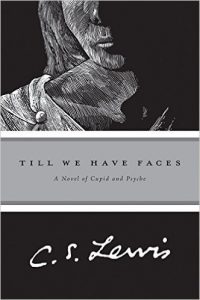Confession 1: I didn’t enjoy the Narnia books. In fairness, I only read two before I felt I’d had enough. But, there it is. The characters seemed ludicrously non-reactive to the extreme circumstances they faced, and the plot (as I recall)  seemed to be a grabbag of whimsy that more or less went nowhere as you waited for Aslan to show up.
seemed to be a grabbag of whimsy that more or less went nowhere as you waited for Aslan to show up.
In fairness, I was not raised as a Christian, and I was only later told about the apparently blatant use of Christian imagery. So, perhaps part of my confusion about the books’ popularity came from entirely missing the point. Then again, perhaps this is why the old religions (it seems to me) are so much more adept at creating compelling epics. What meaning is there in Gilgamesh’s questing or Odysseus’ journey if there is a single omniscient abstraction orchestrating the whole thing?
Till We Have Faces still carries plenty of Christian imagery. In fact, the main character is torn between her local pagan religion, with its funny smells and magical irrationalities, and the skeptical atheistic tradition embodied by a Greek advisor to her family. Of course, she ends up more drawn to something vaguely related to Lewis’ vision of Christianity.
Fine. Now, set that all aside, and realize that this is a wonderful book. The main character, an old woman telling her own history, is absolutely fantastically crafted. There is a richness of understanding in this book, which Lewis contemplated his whole life only to write in his old age. Everywhere is profundity – in the politics of the world, in the various characters, in the way passing time twists understanding of previous events. I, who am not generally a fan of CS Lewis, adored this book. Considering its relative shortness, the emotional depth is remarkable.
